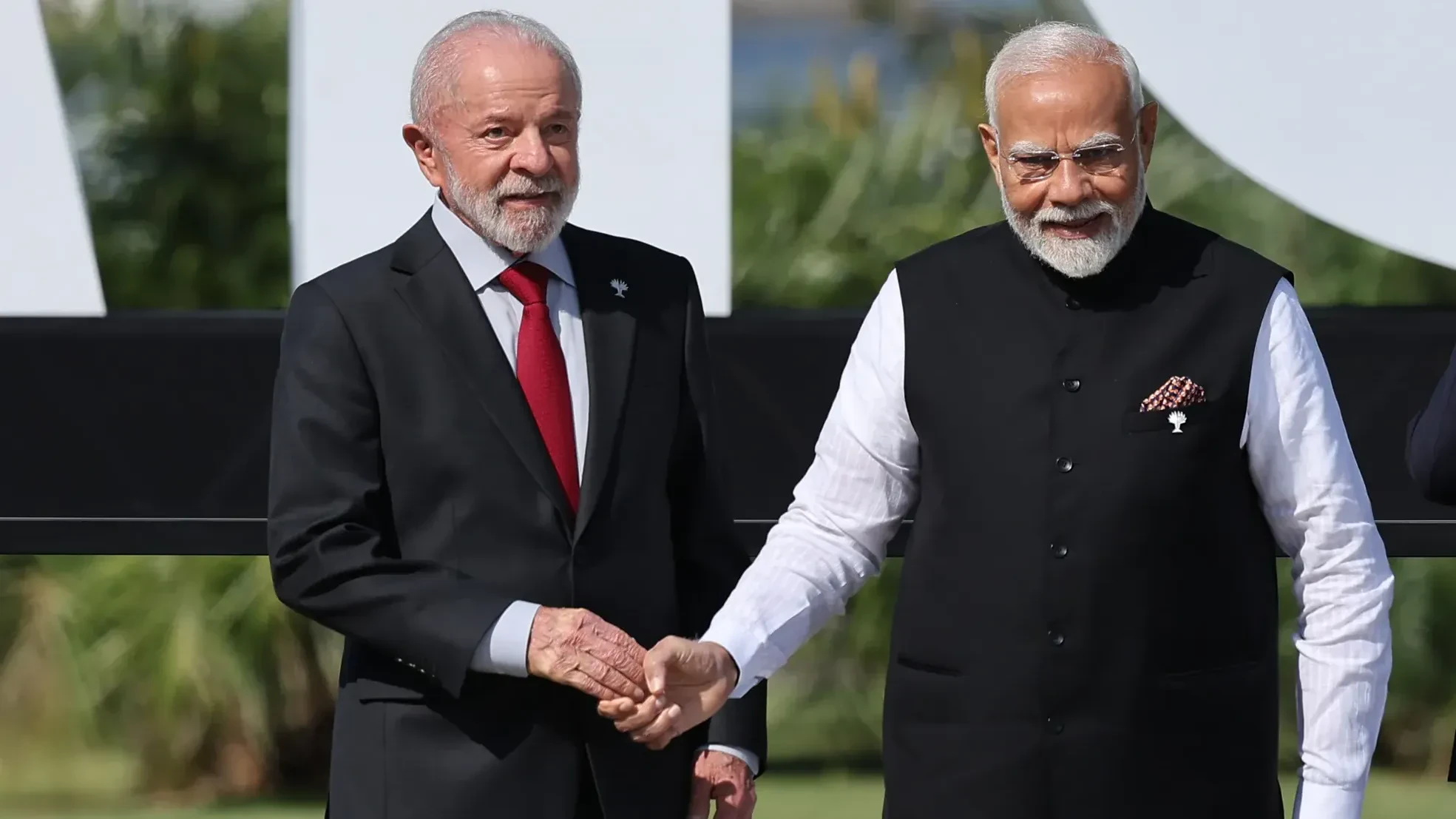
Trade Winds shift : US Tariffs spur India-Brazil ties
The imposition of high import tariffs by US President Donald Trump has united the economies of the rest of the world, all clamouring to cement trade pacts at an unparalleled pace. The list of recent trade agreements signed, and new negotiations initiated, is long and varied.
The European Union (EU) concluded its nine-year-long negotiation on a trade agreement with Indonesia and also updated its trade agreement with Mexico after two decades. This year, the European Free Trade Area (EFTA), a grouping that consists of Iceland, Liechtenstein, Norway, and Switzerland, signed free trade agreements (FTAs) with Mercosur—a South American regional bloc where Brazil is a founder member—and also with India, Thailand, and Malaysia. Mercosur also plans to sign trade deals with Canada, the United Kingdom (UK), Vietnam, the United Arab Emirates (UAE), Indonesia, and Japan, as well as expand its current trade agreement with India. The UAE is on a signing spree, finalising FTAs with Kenya, New Zealand, Malaysia, Serbia, and Ukraine, all in 2025. The UAE is also a founding member of a 14-country grouping titled the Future of Investment and Trade Partnership; in their joint declaration, the members emphasise the need for “principles of open and fair trade and adherence to the rules-based trading system.”
It is in this larger, global context that we must view the recent visit of the latest invitee to India’s trade negotiation table – Brazil’s Vice President Geraldo Alckmin, who also happens to be the country’s Minister of Development, Industry, Trade and Services. Alckmin’s visit to Delhi between 15-17 October comes barely two months after Brazilian President Luiz Inácio Lula da Silva and Indian Prime Minister Narendra Modi’s hour-long call on 7 August, where they discussed Washington’s “imposition of unilateral tariffs.” Washington has pushed both India and Brazil to the corner, hitting them with harsh 50 percent tariffs and making a large chunk of their exports simply unviable for the US market. In response, Brasilia and New Delhi have shown a united front to soften the economic blow. In reference to the India-Mercosur trade agreement, a statement from India’s commerce ministry noted that India and Brazil “should endeavour to conclude the negotiations within one year from the launch of negotiations.”
The head of Apex Brasil, Brazil’s trade and investment promotion agency, recently exclaimed that “perhaps the biggest increase in trade flows we’ll see, regardless of the tariff hike, but also because of it, will be with India.” Alckmin was accompanied by a rather large and diversified delegation, including Defence Minister José Monteiro, and the country’s largest companies from the oil, defence, mining, agriculture, food, and aviation sectors. His visit follows a string of bilateral engagements, including the sixth India-Brazil Strategic Dialogue on 3 October, led by India’s National Security Advisor Ajit Doval and the Chief Advisor to the Brazilian president, Ambassador Celso Amorim; the India-Brazil Trade Monitoring Mechanism chaired on 7 October by both countries’ top trade officials; and the upcoming Brazil-India Defence dialogue, scheduled for 24 November in Santos, Brazil.
This India-Brazil camaraderie is not owed entirely to Trump’s tariffs; it is also a corollary of each country’s foreign policy playbook. For Brazil, such rapprochement is part of a policy of ‘autonomia pela diversificação’ (autonomy through diversification). New Delhi frames it in multiple terms, beginning with ‘non-alignment,’ to its more recent avatar as ‘strategic autonomy’ or ‘multi-alignment.’ The principle remains the same: an independent foreign and trade policy that rests on multiple foundations. Both India and Brazil are branching out and pursuing as many options as possible to offset the impact of high US tariffs. But there is a limit to India-Brazil economic engagement, since both countries compete in global markets for products like sugar, coffee, and cotton.
Alckmin’s visit to India saw some immediate results. He announced that Indians can now receive e-visas to visit Brazil, and he also inaugurated the India office of Embraer, Brazil’s aviation giant, along with Brazil’s defence minister and India’s aviation minister. Embraer will now co-produce, along with India’s Mahindra group, the C-390 Millennium military transport plane for the procurement of the Indian Air Force. Additionally, India and Brazil are also expanding cooperation in the field of energy, particularly petroleum. As the US levies tougher sanctions on Russia’s oil companies, India is looking to countries like Brazil to make up the balance, especially given the high production volumes in Brazil’s pre-salt fields of Buzios and Tupi in Santos. Indian oil companies may also participate in Brazil’s upcoming auction of six exploration blocks in Campos and Santos in 2026; and Petrobras, Brazil’s national oil company, has also firmed up sales contracts with India’s Hindustan Petroleum, Bharat Petroleum, and Indian Oil Corporation.
The high tariffs imposed by Trump have become a watershed moment. Trump’s ‘Liberation Day’ tariffs may mark the end of Washington’s role at the helm of trade liberalisation, spurring the rest of the world on a path of free trade. One of the biggest winners is China, the world’s largest trader since 2013. Despite double-digit decreases in exports to the US, China’s exports in 2025 have increased, rising 8.3 percent in September 2025. Countries like India and Brazil still have some way to go to cushion the impact of US tariffs, but they have proven their intent. Lula’s upcoming visit to Delhi in early 2026 may yield more substantive outcomes.
Source : ORF
